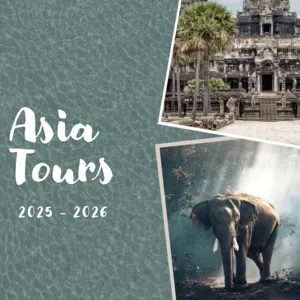Historical Sites Bangladesh
Historical Sites Bangladesh: Uncover Centuries of Heritage
Bangladesh, a land brimming with a rich tapestry of history and culture, offers a captivating journey through time. From ancient ruins to magnificent monuments, the historical sites of Bangladesh whisper tales of empires, religions, and revolutions. Exploring these sites is a perfect way to understand the evolution of this vibrant nation. We begin our exploration by focusing on *historical sites in Bangladesh*, the primary focus of this travel guide. This guide is designed to help you *explore destinations* and uncover the treasures of Bangladesh’s past. Whether you’re a history enthusiast or a curious traveler, prepare to be amazed by the architectural wonders and historical narratives that await.
Delving into the Past: Top Historical Sites in Bangladesh
Bangladesh’s historical landscape is dotted with remnants of various eras, each contributing to the nation’s unique identity. From the Buddhist monasteries of the Pala dynasty to the Mughal forts and the colonial-era buildings, the country is an open-air museum. Here, we explore some key *historic landmarks* and delve into their significance.
**Most Interesting: Somapura Mahavihara (Paharpur)**
Somapura Mahavihara, a UNESCO World Heritage Site, is one of the most important archaeological sites in Bangladesh. Located in Paharpur, it was once a renowned intellectual center and a significant Buddhist monastery. The sheer scale of the complex and the intricate terracotta plaques adorning its walls are sure to capture your attention. This site is not just ruins; it’s a glimpse into a thriving Buddhist civilization that flourished centuries ago.
Address: Paharpur, Badalgachhi Upazila, Naogaon District, Bangladesh.
Opening Hours: Typically 9 AM to 5 PM, but may vary seasonally. It’s best to check before visiting.
Availability: Open year-round, though the monsoon season (June-September) can make access challenging.
Prices: Entry fee is nominal, typically around BDT 200 for foreigners and BDT 20 for locals.
**Most Piquant: Ahsan Manzil (Pink Palace)**
Located on the banks of the Buriganga River in Dhaka, Ahsan Manzil, also known as the Pink Palace, offers a slightly provocative glimpse into the opulent lives of the Nawabs of Dhaka. Its unexpected color and Indo-Saracenic Revival architecture make it a unique landmark. The palace’s history is filled with tales of power, family feuds, and eventual decline, making it a fascinating place to explore.
Address: 06, Islampur Rd, Dhaka 1100, Bangladesh
Opening Hours: Saturday – Wednesday: 10:30 AM – 5:30 PM (April – September), 9:30 AM – 4:30 PM (October – March). Friday: 3:00 PM – 7:30 PM. Closed on Thursdays.
Availability: Open year-round, except for Thursday.
Prices: Entry fee for Bangladeshi nationals is BDT 20, and for foreign nationals, it is BDT 200.
**Most Spectacular: Sixty Dome Mosque (Shat Gombuj Masjid)**
The Sixty Dome Mosque, in Bagerhat, is a UNESCO World Heritage site and a testament to the architectural prowess of the 15th-century Sultanate period. Despite its name, the mosque actually has eighty-one domes! Its massive structure, numerous domes, and serene atmosphere create a truly spectacular sight. The sheer scale of the building and the peaceful surroundings leave a lasting impression.
Address: Bagerhat Sadar Upazila, Bagerhat District, Khulna Division, Bangladesh.
Opening Hours: Typically open from sunrise to sunset. It’s best to check with local authorities for precise timings, especially during religious holidays.
Availability: Open year-round. The best time to visit is during the cooler months (October to March).
Prices: The entry fee is approximately BDT 200 for foreigners and BDT 20 for locals.
**Funniest: The Story of the Rickshaws in Dhaka**
While not a single “site,” the ubiquitous rickshaws of Dhaka are a living, breathing part of the city’s history and offer a unique, and often humorous, travel experience. The brightly decorated rickshaws, and the often-entertaining interactions with their drivers, provide a lighthearted perspective on the city’s vibrant culture. Navigating the bustling streets in a rickshaw is an adventure in itself, often filled with smiles and laughter.
Address: Throughout Dhaka, Bangladesh.
Opening Hours: Rickshaws operate 24/7, although availability may be limited during late-night hours.
Availability: Rickshaws are readily available throughout the city at any time.
Prices: Fares vary depending on distance and negotiation skills. Short trips typically start from BDT 20-30.
**Most Mysterious: Mahasthangarh**
Mahasthangarh, one of the earliest urban archaeological sites in Bangladesh, is shrouded in mystery. Dating back to the 3rd century BC, the citadel’s ruins hint at a sophisticated civilization whose full story is still being unearthed. The layers of history, spanning various empires, and the many unanswered questions about its past create an aura of intrigue.
Address: Shibganj Upazila, Bogra District, Rajshahi Division, Bangladesh.
Opening Hours: Generally open from 9 AM to 5 PM, but timings may vary seasonally. Check before visiting.
Availability: Open year-round. The best time to visit is during the cooler months (October to March).
Prices: Entry fee is approximately BDT 200 for foreigners and BDT 20 for locals.
**Most Extreme (in terms of historical resilience): Lalbagh Fort**
Lalbagh Fort, an incomplete Mughal fort in Dhaka, might not be “extreme” in the modern sense, but its history represents the resilience of a people. The fort witnessed the tumultuous events of the Mughal decline and the rise of British power. Its unfinished state adds to its unique character, a testament to a project abandoned amidst political upheaval.
Address: Lalbagh Rd, Dhaka 1211, Bangladesh.
Opening Hours: 10 AM to 6 PM (April-September), 9 AM to 5 PM (October-March). Closed on Sundays and government holidays.
Availability: Open throughout the year, except Sundays and holidays.
Prices: BDT 200 for foreign visitors, BDT 20 for locals.
**Most Inspiring: National Martyrs’ Memorial (Jatiya Smriti Saudha)**
The National Martyrs’ Memorial in Savar is a powerful tribute to the martyrs of the Bangladesh Liberation War. Its soaring design and symbolic elements inspire a sense of patriotism and reverence. The memorial stands as a reminder of the sacrifices made for independence and serves as a beacon of hope and national unity.
Address: Savar, Dhaka, Bangladesh.
Opening Hours: Generally open from sunrise to sunset.
Availability: Open year-round.
Prices: Entry is free.
**The Most Amazing: Wari-Bateshwar Ruins**
The Wari-Bateshwar ruins, still under excavation, represent a potentially groundbreaking discovery, pushing back the timeline of urban settlements in Bangladesh. The artifacts unearthed suggest a thriving civilization with trade links extending to the Roman Empire. This site is amazing because it continues to reveal new information, potentially rewriting the history books.
Address: Belabo Upazila, Narsingdi District, Bangladesh.
Opening Hours: As an active archaeological site, access may be restricted. Contact the Department of Archaeology, Bangladesh, for information on visits.
Availability: Access is limited and depends on ongoing research activities.
Prices: Visiting may require special permission and fees; inquire with the Department of Archaeology.
**The Most Atmospheric: Panam Nagar (Panam City)**
Panam Nagar, a deserted city near Sonargaon, offers a hauntingly atmospheric experience. This once-thriving trading center is now a collection of beautifully decaying buildings, creating a unique and evocative ambiance. Walking through the deserted streets, you can almost hear the echoes of the past.
Address: Sonargaon, Narayanganj District, Bangladesh.
Opening Hours: Generally accessible during daylight hours.
Availability: Open year-round.
Prices: Entry fee is nominal, typically around BDT 100-200.
**The Most Unusual: Kantajew Temple**
Kantajew Temple near Dinajpur is renowned for its exquisite terracotta ornamentation, a true *hidden gem*. Every inch of the temple’s surface is covered in intricate panels depicting scenes from Hindu epics. What makes it unusual is the sheer density and artistry of the terracotta work, making it a unique architectural marvel.
Address: Kaharole Upazila, Dinajpur District, Rangpur Division, Bangladesh.
Opening Hours: Typically open from 9 AM to 5 PM, but it’s advisable to check beforehand.
Availability: Open year-round.
Prices: Entry fee is nominal, usually around BDT 20-50.
Beyond the Monuments: Experiencing History
Visiting historical sites is not just about seeing old buildings; it’s about immersing yourself in the culture and context of the time. *Cultural Experiences Bangladesh* offers a range of activities to enhance your understanding of Bangladesh history.
Museums and Galleries:
Bangladesh National Museum in Dhaka is a treasure trove of artifacts, providing a comprehensive overview of the country’s history and art. The Liberation War Museum, also in Dhaka, offers a moving account of the struggle for independence.
Address (Bangladesh National Museum): Shahbag, Dhaka 1000, Bangladesh
Opening Hours: Saturday – Wednesday: 10:30 AM – 5:30 PM (April – September), 9:30 AM – 4:30 PM (October – March). Friday: 2:30 PM – 7:30 PM. Closed on Thursdays.
Availability: Open year-round, except for Thursday.
Prices: Entry fee for Bangladeshi nationals is BDT 20, and for foreign nationals, it is BDT 200.
Local Cuisine and Culinary Traditions
Explore *local cuisine Bangladesh* by trying traditional dishes like Dhakai Biryani, a flavorful rice dish with a rich history. Food is an integral part of culture, and experiencing local flavors can connect you to the past in a unique way.
Consider a Culinary travel old Dhaka food tour.
Festivals and Events
Participate in local festivals like Pohela Boishakh (Bengali New Year) to witness the vibrant cultural traditions that have been passed down through generations. *Festivals & Events Bangladesh* offers many opportunities to engage with history and heritage.
Planning Your Trip: Practical Information
Getting Around:
Bangladesh offers various transportation options, including buses, trains, and rickshaws. Consider using Car Rental services for greater flexibility in exploring remote historical sites. Transportation options are generally affordable and readily available.
For internal travel Flights and Rail Services.
Accommodation:
From budget-friendly guesthouses to luxurious hotels, Bangladesh caters to all types of travelers. Explore options under Accommodation to find the perfect stay for your historical adventure. Consider Hotels near major historical sites for convenient access.
Nearby Attractions
Many historical sites are located near other points of interest, allowing you to combine your historical exploration with other experiences.
* **Near Somapura Mahavihara:** Explore the nearby ruins of Halud Vihara and the village of Paharpur.
* **Near Ahsan Manzil:** Take a boat ride on the Buriganga River and explore the bustling Sadarghat area.
* **Near Sixty Dome Mosque:** Visit the Mosque City of Bagerhat, a UNESCO World Heritage Site with numerous other historical mosques.
* **Near Mahasthangarh:** Explore the nearby Govinda Bhita temple ruins and the Gokul Medh site.
* **National & State Parks:** Lawachara National Park.
* **Natural Wonders:** Ratargul Swamp Forest
* **Botanical Gardens:** Ramna Park
Conclusion: A Journey Through Time Awaits
Exploring the historical sites of Bangladesh is a journey through time, offering a glimpse into the rich and diverse heritage of this fascinating country. From ancient Buddhist monasteries to Mughal forts and colonial-era buildings, each site tells a story, waiting to be discovered. Plan your adventure, delve into the past, and uncover the treasures of Bangladesh’s historical landscape. Use this guide to *plan my trip* and create unforgettable memories.


